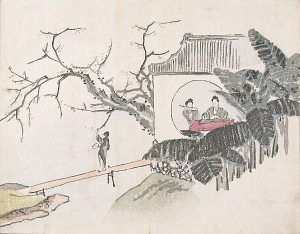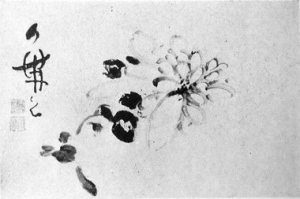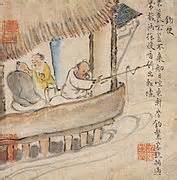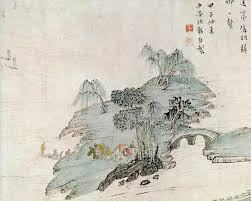Japan Art and Humble Background of Ike No Taiga: China, Isolation, and Stratification
Lee Jay Walker
Modern Tokyo Times
The Edo Period is famous for isolating Japan from the outside world and equally known for stratification. This applies notably to events prior to the last few decades of the demise of the Edo Period because Western encroachment would play a part in the Meiji Restoration of 1868. After all, modernists in Japan feared being humiliated and colonized likes so many other parts of the world that had fallen to Western (British Empire, France, and others) and Islamic powers (Ottoman Empire).
However, many basic known realities about the life of Ike no Taiga (1723-1776) shatters many myths. This equally applies to the kindred spirit of Taiga, his love of Chinese culture and coming from a family that was relatively poor.
In history both China and Korea impacted on Japan and of course many Japanese scholars and religious leaders ventured to several parts of Northeast Asia. Likewise, the common bonds of Buddhism and Confucianism – and other powerful thought patterns and philosophies – shaped all nations throughout this region. At the same time, individual factors shaped all societies throughout Northeast Asia and similarly you had enormous regional variations within each society. Therefore, the Buddhist faith encountered indigenous Shintoism in Japan and in time various Buddhist sects would come to the fore. Yet Buddhism in Japan would be based on various concepts, new ideas, enormous fusions of various philosophies and more pure forms of Buddhist ideas.
The above reality means that irrespective if Japan desired to isolate itself from the outside world, it was literary too late when it applied to high culture, faith, art, philosophy, ideas – and other important areas of society. In other words, Chinese culture – and the impact of Korea – had already penetrated the land of the rising sun. Therefore, Taiga followed on from this reality just like many Japanese artists prior to the demise of the Edo Period.
Taiga also shatters the myth when it comes to stratification because despite the precarious situation of his family, prior to relocating to central Kyoto from the outskirts of this powerful city, they had fled famine and poverty. His parents still faced initial difficulties in Kyoto because resettling is never easy given the prevailing conditions. However, in time, his father found decent employment at the silver mint and moved to more central parts of Kyoto.
Therefore, the son of a father who was initially a farmer would equally shatter the myths of stratification. In other words, Taiga’s father overcame his humble upbringing and the reality of famine by obtaining favorable employment. Similarly, Taiga overcame his background and the loss of his father at a very early age to become a famous artist. On top of this, it is clear that Taiga had a kindred spirit based on creativity, individualism, the love of high culture and he equally adored the richness of Chinese culture.
In a past article, I comment “Taiga’s widowed mother somehow managed to afford to provide him with good teachers, in all the classical Japanese and Chinese disciplines. At age six, he began receiving instruction in calligraphy and religious matters at the Manpuku-ji Zen temple. He would continue to foster strong connections with this temple for the remainder of his life… By age fourteen, Taiga was a professional artist and distinguished calligrapher. He ran a small fan-painting shop in Kyoto and engraved artists’ and collectors’ seals as well. It was an encounter with Yanagisawa Kien, a major social and artistic figure of the time that initiated Taiga’s introduction to the world of the bunjin.”
Therefore, the beauty of Taiga not only applies to his stunning art and creativity in various areas; it also applies to the complex reality of his upbringing and how he overcame adversity. It is equally noticeable that his mother and father were blessed with being extremely tenacious. Also, despite Japan closing the door to the outside world, it is clear that Chinese culture remained powerful within Japanese society. Similarly, issues related to stratification appear to be in reversal when it comes to his family. Given this reality, highly cultured individuals would impact greatly on Taiga despite his humble background.
Modern Tokyo News is part of the Modern Tokyo Times group
DONATIONS to SUPPORT MODERN TOKYO TIMES – please pay PayPal and DONATE to sawakoart@gmail.com
http://moderntokyotimes.com Modern Tokyo Times – International News and Japan News
http://sawandjay.com Modern Tokyo Times – Fashion
https://moderntokyonews.com Modern Tokyo News – Tokyo News and International News
http://global-security-news.com Global Security News – Geopolitics and Terrorism
PLEASE JOIN ON TWITTER
https://twitter.com/MTT_News Modern Tokyo Times
PLEASE JOIN ON FACEBOOK
https://www.facebook.com/moderntokyotimes
Some Japanese art and cultural articles by Modern Tokyo Times are republished.






